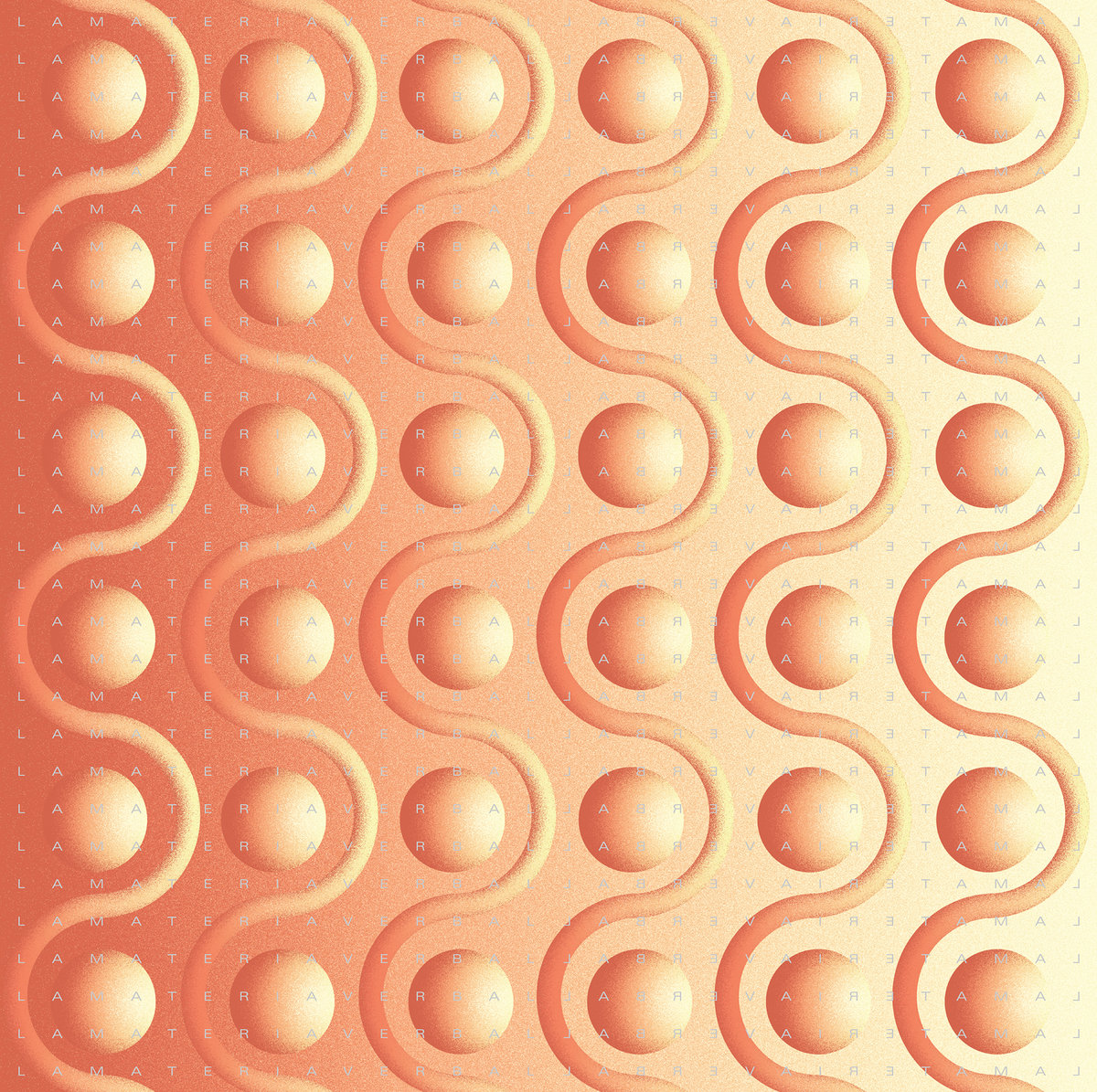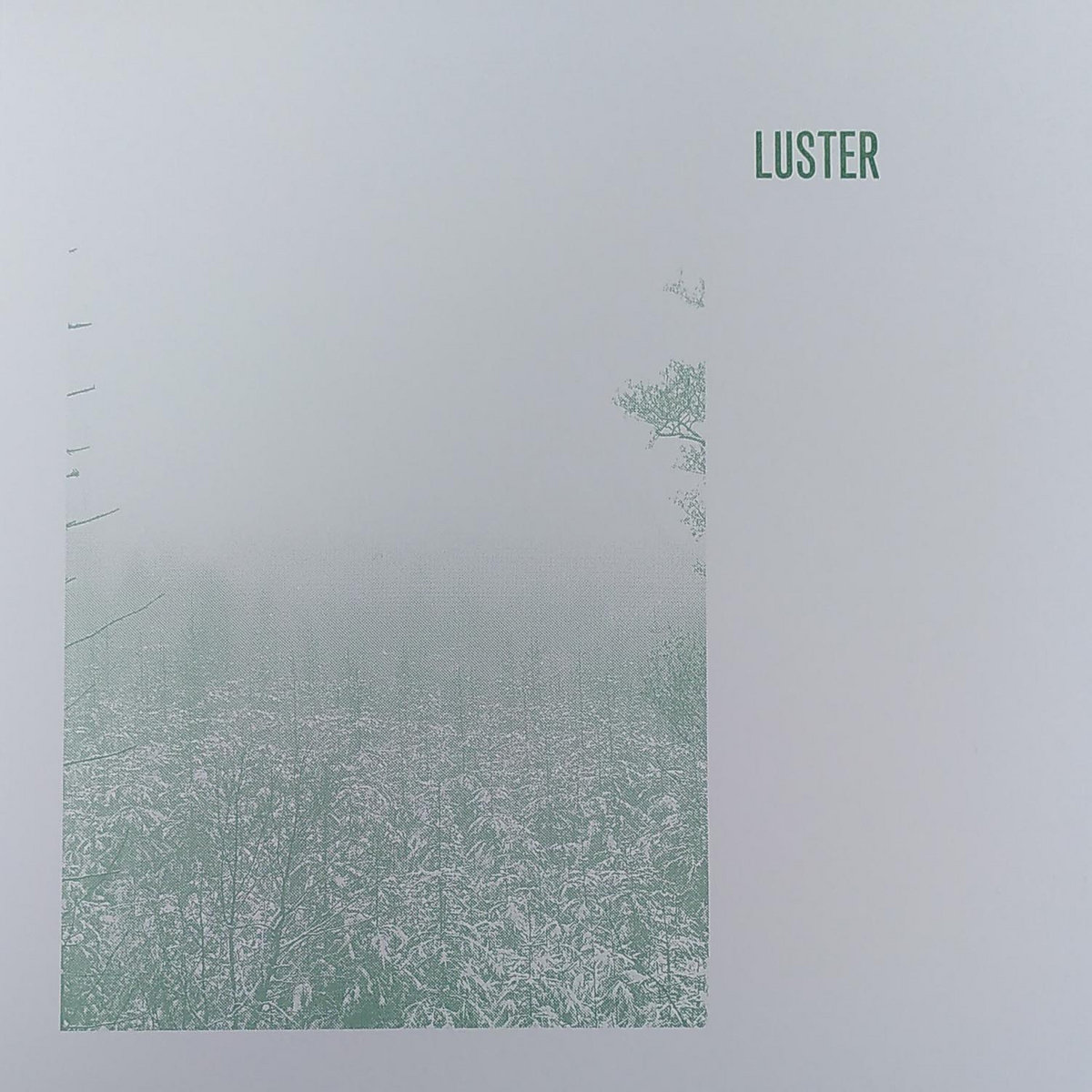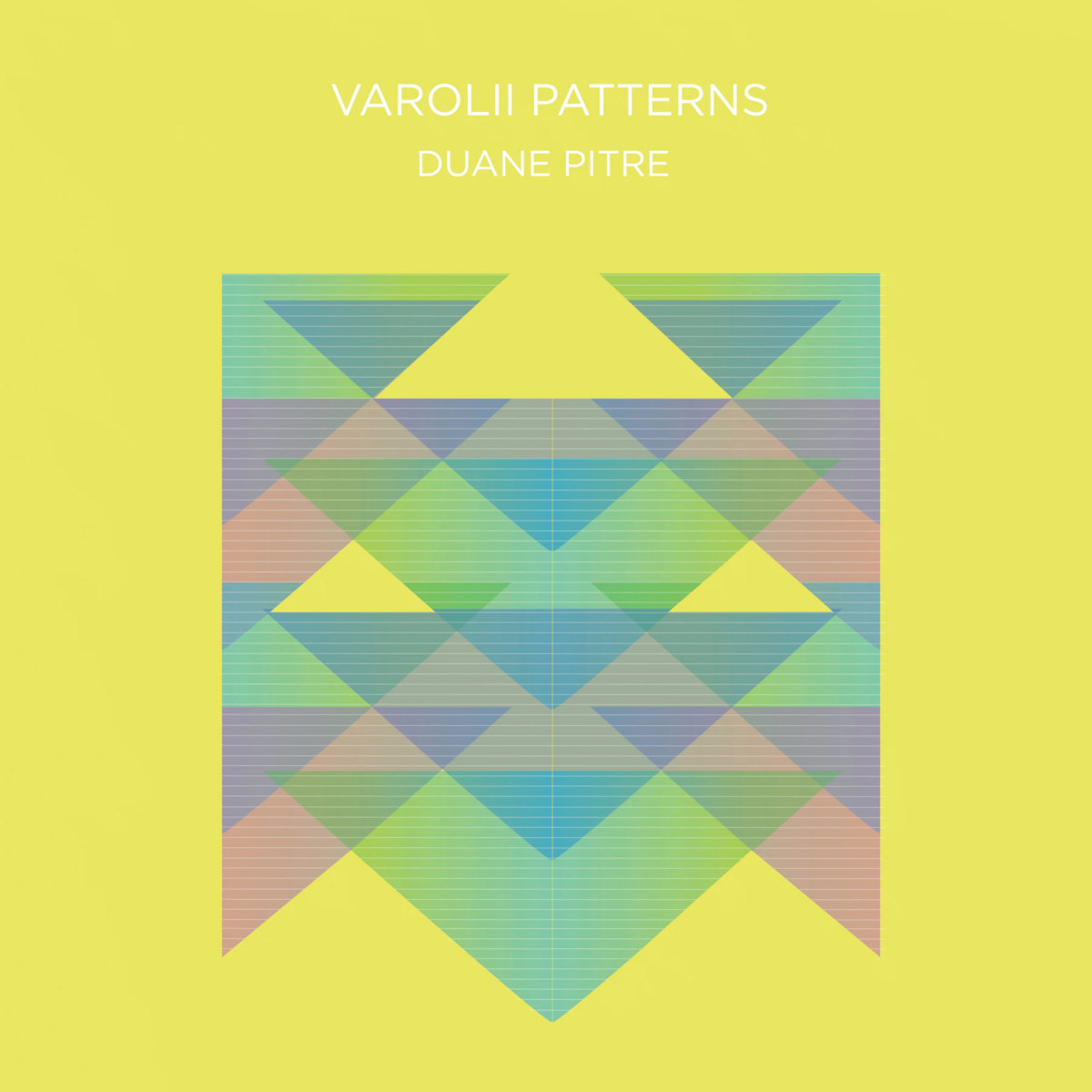 This latest enigmatic find from Arizona's eternally far out and fascinating Was Ist Das? label will be an absolute revelation for anyone who misses Natural Snow Buildings as much as I do. Otherworld is apparently the debut release for this project, but any further details beyond that are non-existent other than the fact that these four pieces were recorded by someone named "Joe" in 2022. While the label's description name-checks a few '70s psych heavy-hitters as reference points in addition to Natural Snow Buildings (Third Ear Band and Popul Vuh), those elements manifest themselves much more subtly, as Otherworld is an oft-transcendent plunge into folk horror-inspired cosmic drone sorcery. That all-encompassing devotion to heavyweight drone majesty is also where Myriad Valley departs from Mehdi and Solange's path, as Joe does not let himself get distracted by any songcraft aspirations, opting instead to focus entirely on crafting massive, sustained psychotropic drones that feel like ancient field recordings from some remote mountain cult hellbent on opening an extra-dimensional portal through sheer vibrational magic.
This latest enigmatic find from Arizona's eternally far out and fascinating Was Ist Das? label will be an absolute revelation for anyone who misses Natural Snow Buildings as much as I do. Otherworld is apparently the debut release for this project, but any further details beyond that are non-existent other than the fact that these four pieces were recorded by someone named "Joe" in 2022. While the label's description name-checks a few '70s psych heavy-hitters as reference points in addition to Natural Snow Buildings (Third Ear Band and Popul Vuh), those elements manifest themselves much more subtly, as Otherworld is an oft-transcendent plunge into folk horror-inspired cosmic drone sorcery. That all-encompassing devotion to heavyweight drone majesty is also where Myriad Valley departs from Mehdi and Solange's path, as Joe does not let himself get distracted by any songcraft aspirations, opting instead to focus entirely on crafting massive, sustained psychotropic drones that feel like ancient field recordings from some remote mountain cult hellbent on opening an extra-dimensional portal through sheer vibrational magic.
The opening "Hanging Crystal Garden" makes for quite a mesmerizing introduction to Myriad Valley, as slow waves of buzzing tanpura lap at the shores of an occult nightmare. The buzzing tanpura drones are a ubiquitous feature throughout the album, as is ritualistic hand percussion (in this case, something like rattling bells), but this particular piece has an especially otherworldly and sinister vibe due to the strangled dissonance of the pipes and the way the notes increasingly bleed together and dissolve into sharp feedback. Notably, "Hanging Crystal Garden" is the album's shortest piece (at eight minutes) despite being the most inspired, but that makes sense given its nerve-jangling intensity. The much longer second piece is considerably calmer and more radiant (at first, anyway), almost calling to mind a restorative early morning yogic meditation to clear the mind of the previous night's cosmic horror, human sacrifice, and demon summoning.


 This quadruple LP boxed set is likely to be an absolute revelation for Laraaji fans, as Numero Group has combined his landmark 1978 debut (Celestial Vibration) with the equivalent of three lost albums recorded around the same time. The albums in question surfaced in 2021 when some acetates from an abandoned storage locker were auctioned off and passed through a flea market and Ebay before being spotted by eagle-eyed college student Jake Fischer, who snapped them up for $114 after recognizing Laraaji's given name (Edward Larry Gordon, the name he was still using at the time of Celestial Vibration's release). Amusingly, even Laraaji himself is a bit mystified by the provenance of these recordings, as the documentation states that they were recorded at a studio in Long Island 200 miles from where the Celestial Vibration sessions took place (ZBS in Fort Edward). While it remains unclear whether the Fort Edward tapes were merely transferred in Long Island or whether these recordings actually originate from a different session altogether in Queens, they are unmistakably Laraaji and they are frequently as good or better than the album that actually got released. Finds like this are exactly why there are Discogs fiends hunting for lost private press New Age music, as the late '70s and early '80s were a golden age for bedroom visionaries who thanklessly explored the cosmos with little hope of ever reaching an audience. Laraaji deserves a particularly special place in that pantheon, as he may have been the most forward-thinking visionary of them all and also took his autoharp to the goddamn streets to expand the consciousness of unwitting strangers.
This quadruple LP boxed set is likely to be an absolute revelation for Laraaji fans, as Numero Group has combined his landmark 1978 debut (Celestial Vibration) with the equivalent of three lost albums recorded around the same time. The albums in question surfaced in 2021 when some acetates from an abandoned storage locker were auctioned off and passed through a flea market and Ebay before being spotted by eagle-eyed college student Jake Fischer, who snapped them up for $114 after recognizing Laraaji's given name (Edward Larry Gordon, the name he was still using at the time of Celestial Vibration's release). Amusingly, even Laraaji himself is a bit mystified by the provenance of these recordings, as the documentation states that they were recorded at a studio in Long Island 200 miles from where the Celestial Vibration sessions took place (ZBS in Fort Edward). While it remains unclear whether the Fort Edward tapes were merely transferred in Long Island or whether these recordings actually originate from a different session altogether in Queens, they are unmistakably Laraaji and they are frequently as good or better than the album that actually got released. Finds like this are exactly why there are Discogs fiends hunting for lost private press New Age music, as the late '70s and early '80s were a golden age for bedroom visionaries who thanklessly explored the cosmos with little hope of ever reaching an audience. Laraaji deserves a particularly special place in that pantheon, as he may have been the most forward-thinking visionary of them all and also took his autoharp to the goddamn streets to expand the consciousness of unwitting strangers. This latest opus from INA GRM's François J. Bonnet is loosely inspired by René Daumal's unfinished philosophical novel Mount Analogue (1952), which recounts an imagined expedition in which explorers hunt for a mountain that can "only be perceived by the application of obscure knowledge." It has been a few decades since I last read Mount Analogue or watched the film it partially inspired (Jodorowsky's Holy Mountain) so my memory of both is blurry at best, yet that did not impair my appreciation for the album, as Bonnet characteristically channeled the theme in his own inventive and compelling way. The gist is that familiar sounds and structures become increasingly rare as the album unfolds, but Bonnet had a deeper philosophical agenda as well, as Shifted in Dreams is a meditation on how our current world is in a "blurred and uncertain state where the reality of signs loses its consistency while, paradoxically, the reality of senses and impressions becomes imperative, obvious." Bonnet is clearly not a fan of that situation, unsurprisingly, and refers to it as "the reality of demons." Putting aside the death of meaning and general existential horror of our times, however, the dissolving of the familiar is wonderfully fertile creative ground for a Kassel Jaeger album, as Bonnet is exceptionally good at layered and evocative sound design. This is a beautifully crafted headphone album (but probably only for those armed with the obscure knowledge of how to listen deeply).
This latest opus from INA GRM's François J. Bonnet is loosely inspired by René Daumal's unfinished philosophical novel Mount Analogue (1952), which recounts an imagined expedition in which explorers hunt for a mountain that can "only be perceived by the application of obscure knowledge." It has been a few decades since I last read Mount Analogue or watched the film it partially inspired (Jodorowsky's Holy Mountain) so my memory of both is blurry at best, yet that did not impair my appreciation for the album, as Bonnet characteristically channeled the theme in his own inventive and compelling way. The gist is that familiar sounds and structures become increasingly rare as the album unfolds, but Bonnet had a deeper philosophical agenda as well, as Shifted in Dreams is a meditation on how our current world is in a "blurred and uncertain state where the reality of signs loses its consistency while, paradoxically, the reality of senses and impressions becomes imperative, obvious." Bonnet is clearly not a fan of that situation, unsurprisingly, and refers to it as "the reality of demons." Putting aside the death of meaning and general existential horror of our times, however, the dissolving of the familiar is wonderfully fertile creative ground for a Kassel Jaeger album, as Bonnet is exceptionally good at layered and evocative sound design. This is a beautifully crafted headphone album (but probably only for those armed with the obscure knowledge of how to listen deeply). Written and recorded immediately following 2021's Even if it Takes a Lifetime, Chicago's Anatomy of Habit's newest album is sonically similar, however it does not sound like the second half of a double album. Instead, Black Openings is a stand-alone work that features the same sense of consistency but overall sees the band further refining and expanding their sound, and in this case returning to the bleakness that pervaded their earlier works so brilliantly.
Written and recorded immediately following 2021's Even if it Takes a Lifetime, Chicago's Anatomy of Habit's newest album is sonically similar, however it does not sound like the second half of a double album. Instead, Black Openings is a stand-alone work that features the same sense of consistency but overall sees the band further refining and expanding their sound, and in this case returning to the bleakness that pervaded their earlier works so brilliantly. Here is a stunning history of Peruvian sound poems from 1972-2021. The album concentrates on material which has been recorded and edited, and yet showcases the compositional technique and sound organization across the spectrum of the discipline. It's an important and refreshing collection of 22 inherently absurd musical pieces, accompanied by seriously good liner notes.
Here is a stunning history of Peruvian sound poems from 1972-2021. The album concentrates on material which has been recorded and edited, and yet showcases the compositional technique and sound organization across the spectrum of the discipline. It's an important and refreshing collection of 22 inherently absurd musical pieces, accompanied by seriously good liner notes. The wordless devotional singing and giddy organ accompaniment of Delphine Dora's Hymnes Apophatiques led me to explore the Morc catalog. Therein I developed an audio crush on Bingo Trappers (who were composing an ode to Mimi Parker a decade ago), discovered Lowered's heartbreaking Music For Empty Rooms, arrived better late than never to an appreciation of the drone folk of both Pifkin and Roxane Métayer, but firstly dived into the sweetly sinister debut album from Luster.
The wordless devotional singing and giddy organ accompaniment of Delphine Dora's Hymnes Apophatiques led me to explore the Morc catalog. Therein I developed an audio crush on Bingo Trappers (who were composing an ode to Mimi Parker a decade ago), discovered Lowered's heartbreaking Music For Empty Rooms, arrived better late than never to an appreciation of the drone folk of both Pifkin and Roxane Métayer, but firstly dived into the sweetly sinister debut album from Luster. This stellar collaboration springs from a conversation that Scott Morgan and Lawrence English once had about especially "rich sources" for electronic music composition. Unsurprisingly, that discussion led to the inspiration behind much of English's recent solo work: a 19th century pipe organ housed at the Old Museum in his native Brisbane. Colours Of Air is often quite different from English's drone-inspired solo fare, however, as he and Morgan sifted "the swells and drones of the organ for every shivering shade of radiance" and found "flickering infinities in ancient configurations of wind, brass, stone, and dust." In less poetic terms, that means that these eight color-themed pieces "reduce and expand" English's pipe organ recordings into a hallucinatory fantasia enhanced by Morgan's talents for elegantly textured sound design and submerged, slow-motion dub techno pulses. Obviously, promising-sounding collaborations between electronic music luminaries are a dime a dozen, but this is one of the rare ones that feels like an inspired departure from expected terrain and something greater than the sum of its parts. While I suspect my perception is at least partially colored by the album description and the timeless majesty and religious nature of old pipe organs, the best moments of this album beautifully evoke what I would imagine light filtering through stained glass would sound like if I had been blessed with synesthesia.
This stellar collaboration springs from a conversation that Scott Morgan and Lawrence English once had about especially "rich sources" for electronic music composition. Unsurprisingly, that discussion led to the inspiration behind much of English's recent solo work: a 19th century pipe organ housed at the Old Museum in his native Brisbane. Colours Of Air is often quite different from English's drone-inspired solo fare, however, as he and Morgan sifted "the swells and drones of the organ for every shivering shade of radiance" and found "flickering infinities in ancient configurations of wind, brass, stone, and dust." In less poetic terms, that means that these eight color-themed pieces "reduce and expand" English's pipe organ recordings into a hallucinatory fantasia enhanced by Morgan's talents for elegantly textured sound design and submerged, slow-motion dub techno pulses. Obviously, promising-sounding collaborations between electronic music luminaries are a dime a dozen, but this is one of the rare ones that feels like an inspired departure from expected terrain and something greater than the sum of its parts. While I suspect my perception is at least partially colored by the album description and the timeless majesty and religious nature of old pipe organs, the best moments of this album beautifully evoke what I would imagine light filtering through stained glass would sound like if I had been blessed with synesthesia. This latest cassette/digital release from composer/Just Intonation enthusiast Duane Pitre has its origins in a piece written for the brass ensemble Zinc & Copper a few years back (“Pons”), as he stumbled upon an intriguing process while “experimenting with microtonal electronics.” While those experiments did not ultimately make it into the final piece, they later surfaced as one element within 2021’s Omniscient Voices. That was just a fraction of the material recorded using that process, however, as Pitre had repeated it several dozen times and found himself with a considerable backlog of compelling material that was not an ideal fit for Omniscient Voices. Naturally, that led to the release of Varolii Patterns, which collects six of those process experiments that Pitre deemed strong enough to stand on their own both individually and as an album-length statement. The result is a unique and hypnotic suite of Just Intonation synth pieces that make magic from shifting patterns that “slip in and out of rhythmic focus.”
This latest cassette/digital release from composer/Just Intonation enthusiast Duane Pitre has its origins in a piece written for the brass ensemble Zinc & Copper a few years back (“Pons”), as he stumbled upon an intriguing process while “experimenting with microtonal electronics.” While those experiments did not ultimately make it into the final piece, they later surfaced as one element within 2021’s Omniscient Voices. That was just a fraction of the material recorded using that process, however, as Pitre had repeated it several dozen times and found himself with a considerable backlog of compelling material that was not an ideal fit for Omniscient Voices. Naturally, that led to the release of Varolii Patterns, which collects six of those process experiments that Pitre deemed strong enough to stand on their own both individually and as an album-length statement. The result is a unique and hypnotic suite of Just Intonation synth pieces that make magic from shifting patterns that “slip in and out of rhythmic focus.” This is the second offering from Wormhook, and it is a fine blend of cathartic inner voices with something akin to ancient incantations from the great beyond, augmented, but not swamped, by hand-chamfered electronics and fragile guitar. Umpteen lyrical references to clouds, nature, stones, rain, and heaven, cannot obscure that Wormhook's radical psalmody is far from the tangled common or garden variety of free folk hedgerow bustle, approaching instead the trance-state wisdom of a delirious time-traveling street corner prophet deciphering Sumerian inscriptions to an audience of none.
This is the second offering from Wormhook, and it is a fine blend of cathartic inner voices with something akin to ancient incantations from the great beyond, augmented, but not swamped, by hand-chamfered electronics and fragile guitar. Umpteen lyrical references to clouds, nature, stones, rain, and heaven, cannot obscure that Wormhook's radical psalmody is far from the tangled common or garden variety of free folk hedgerow bustle, approaching instead the trance-state wisdom of a delirious time-traveling street corner prophet deciphering Sumerian inscriptions to an audience of none. Given Celer’s incredibly voluminous discography, releasing any kind of comprehensive retrospective would be one hell of a quixotic and cost-prohibitive endeavor, but this collection does the next best thing. Weighing in at 14 discs spanning 10 albums, this boxed set celebrates an especially significant and prolific era in the project’s evolution: the self-released albums that Will Long and the late Danielle Baquet-Long (Chubby Wolf) recorded as a duo before the latter’s passing in 2009. Not all of them, mind you, but this collection seems to at least cover the ones that matter most. Given that Celer is based in Japan and Bandcamp was still in its formative stages back then, I suspect very few people were hip enough to pounce on the duo’s early CD-Rs at the time of their original release, but the world definitely began to take notice soon after, as I remember Celer albums being a very hot commodity sometime around 2008/2009 when they started getting widely re-released. Unsurprisingly, there are some remastered fan favorites from that era included here, such as Continents and Cantus Libres, but I have grown so accustomed to Long’s current elegantly minimalist dream-drone aesthetic that I was legitimately surprised by the wider palette of moods and atmospheres explored at the project’s inception. Naturally, the gorgeously warm ambient dreamscapes that Celer has long been synonymous with are still the main draw here, but they are not the only draw, as I found it very illuminating to revisit the less-remembered noirish and sci-fi-inspired sides of the duo’s exploratory beginnings.
Given Celer’s incredibly voluminous discography, releasing any kind of comprehensive retrospective would be one hell of a quixotic and cost-prohibitive endeavor, but this collection does the next best thing. Weighing in at 14 discs spanning 10 albums, this boxed set celebrates an especially significant and prolific era in the project’s evolution: the self-released albums that Will Long and the late Danielle Baquet-Long (Chubby Wolf) recorded as a duo before the latter’s passing in 2009. Not all of them, mind you, but this collection seems to at least cover the ones that matter most. Given that Celer is based in Japan and Bandcamp was still in its formative stages back then, I suspect very few people were hip enough to pounce on the duo’s early CD-Rs at the time of their original release, but the world definitely began to take notice soon after, as I remember Celer albums being a very hot commodity sometime around 2008/2009 when they started getting widely re-released. Unsurprisingly, there are some remastered fan favorites from that era included here, such as Continents and Cantus Libres, but I have grown so accustomed to Long’s current elegantly minimalist dream-drone aesthetic that I was legitimately surprised by the wider palette of moods and atmospheres explored at the project’s inception. Naturally, the gorgeously warm ambient dreamscapes that Celer has long been synonymous with are still the main draw here, but they are not the only draw, as I found it very illuminating to revisit the less-remembered noirish and sci-fi-inspired sides of the duo’s exploratory beginnings.
